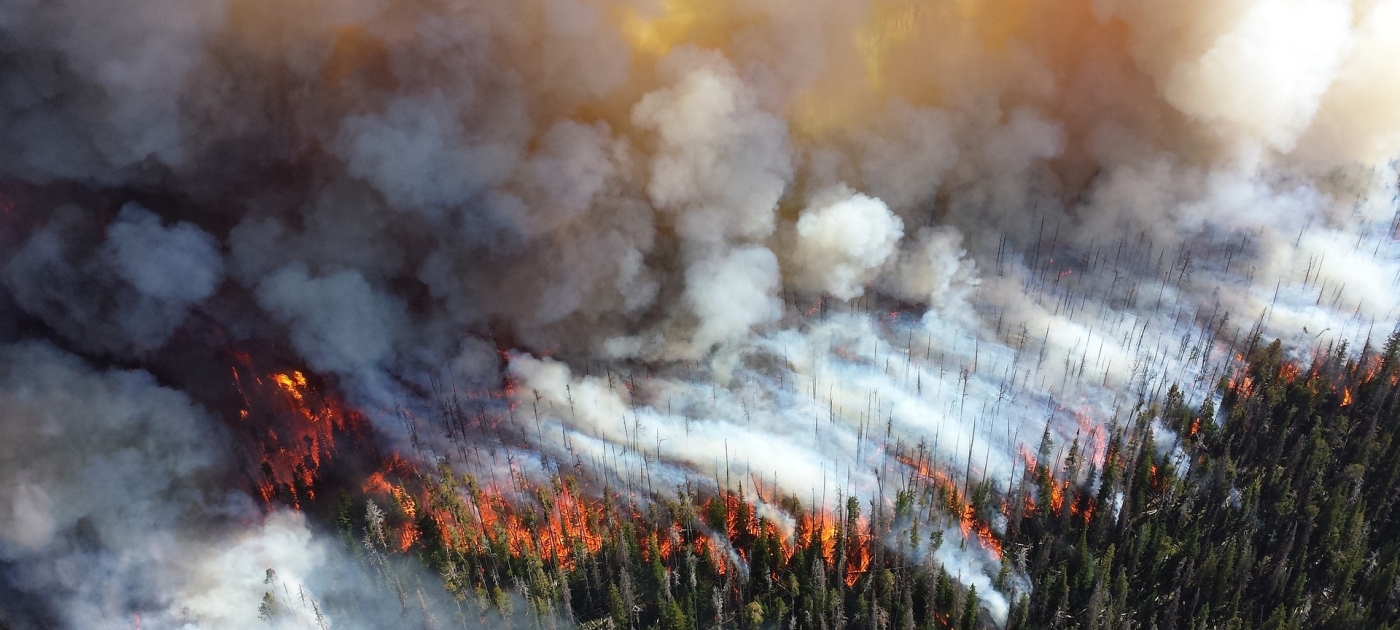2024 has exceeded the record of 2023 in scorching temperatures and depicted the potentially disastrous effects of climate change.
The past year has not just been the hottest year on record but has also witnessed the hottest recorded ocean temperatures and a barrage of heat waves, droughts, floods, wildfires and storms.
Extreme Climate Events were on their most dangerous behaviour. 2024 has made it clear that without a divine miracle, climate catastrophe has arrived on Planet Earth. The “Day After” has arrived, not through nuclear Armageddon but by a climate that has gone amok.
The world must heed UN Secretary-General Antonio Guterres’ grim warning after the 2022 super floods in Pakistan, “Let’s stop sleepwalking towards the destruction of our planet by climate change. Today, it’s Pakistan. Tomorrow, it could be your country.”
Background
Heat waves and wildfires have been exacerbated by climate change. For instance, in Canada, wildfires burned through more than 45 million acres, the most ever in the country. The likely cause is fossil fuel-driven climate change, creating high temperatures and dry weather conditions that lead to worse fires.
Global warming in 2023 went past 1.5 o C, a critical threshold. The past 12 consecutive months since June 2023 have all set new records for monthly temperature. The first half of 2024 has witnessed unprecedented heat, worsened by the El Niño conditions. For instance, January was 1.660C, more than the average global temperature during pre-industrial times. Between June 16 and 24, more than 60 per cent of the world’s population faced extreme heat.
For the first time, global warming has exceeded the 1.5 o C benchmark over a continuous year, exposing the limitations of the Paris Agreement. The 2015 global accord signed by 196 parties features a pledge to prevent temperatures rising by more than 1.5C and keep the increase well below 2 oC. This increase is measured from the global temperature average during pre-industrial times since industrialization brought about the widespread use of fossil fuels.
The 1.5 0 C goal generally refers to a 20-year average rather than each year. The agreement saw most of the world’s nations pledge to restrict man-made greenhouse gas emissions to the levels that trees, soil, and oceans can absorb naturally, i.e., net zero, between the years 2050 and 2100. As per the agreement, each country sets its own carbon reduction goals, and wealthier countries are supposed to help poorer countries adapt to climate change through climate finance. The agreement was signed at the UN Climate Change Conference, also known as COP 21.

Analysis
The 1.5 0 C benchmark is important because keeping long-term global warming below this level is key to avoiding climate change’s most severe damage. The fact that it’s been exceeded over a year means that the window to cut emissions and avoid hazardous climate change has narrowed.
The climate crisis has been precipitated by burning coal, oil, and gas for energy. Further, it has been exacerbated by the natural weather phenomenon El Nino, originating in the Pacific Ocean, which has also contributed to extreme heat. Additionally, El Nino has worsened extreme weather events that are already occurring more frequently due to climate change, like storms, floods, and wildfires.
A key indicator of human-induced climate change is that the volume of carbon dioxide in the earth’s atmosphere has reached a record level. Greenhouse gas emissions from human activity have led to excess carbon dioxide, which traps more heat, resulting in more persistent heat waves and other weather occurrences like hurricanes. The concentration of carbon dioxide in the atmosphere is increasing more rapidly. This means that the global population’s efforts to reduce carbon emissions and transition to greener energy are insufficient to keep global temperatures in check.
Further, Arctic Sea ice has been at the low end of its historical 1979 to 2010 range over most of 2024. Antarctic sea ice has been at an almost record low for the past six months, evincing a clear downward trend in sea ice volume since the satellite recording started in 1979. Further, the average global sea surface temperature in January was the highest ever for the ocean, at a significant 0.26 0 C.
Assessment
- This year has hit unprecedentedly high global temperatures. Experts may lay the blame on the doors of the El Nino phenomenon for the scorching temperatures and the severity of climate events like heat waves, droughts and wildfires. However, human culpability cannot be condoned.
- The record carbon dioxide levels, the rapid rate of its addition to the atmosphere, record high ocean temperatures, and low polar ice levels illustrate the impact fossil fuels have on the earth’s climate.
- While crossing the 1.5 0 C average over a continuous year does not render the Paris Agreement redundant, it does signal a warning that humanity has a narrowing window within which it can make significant changes to curb carbon emissions.




